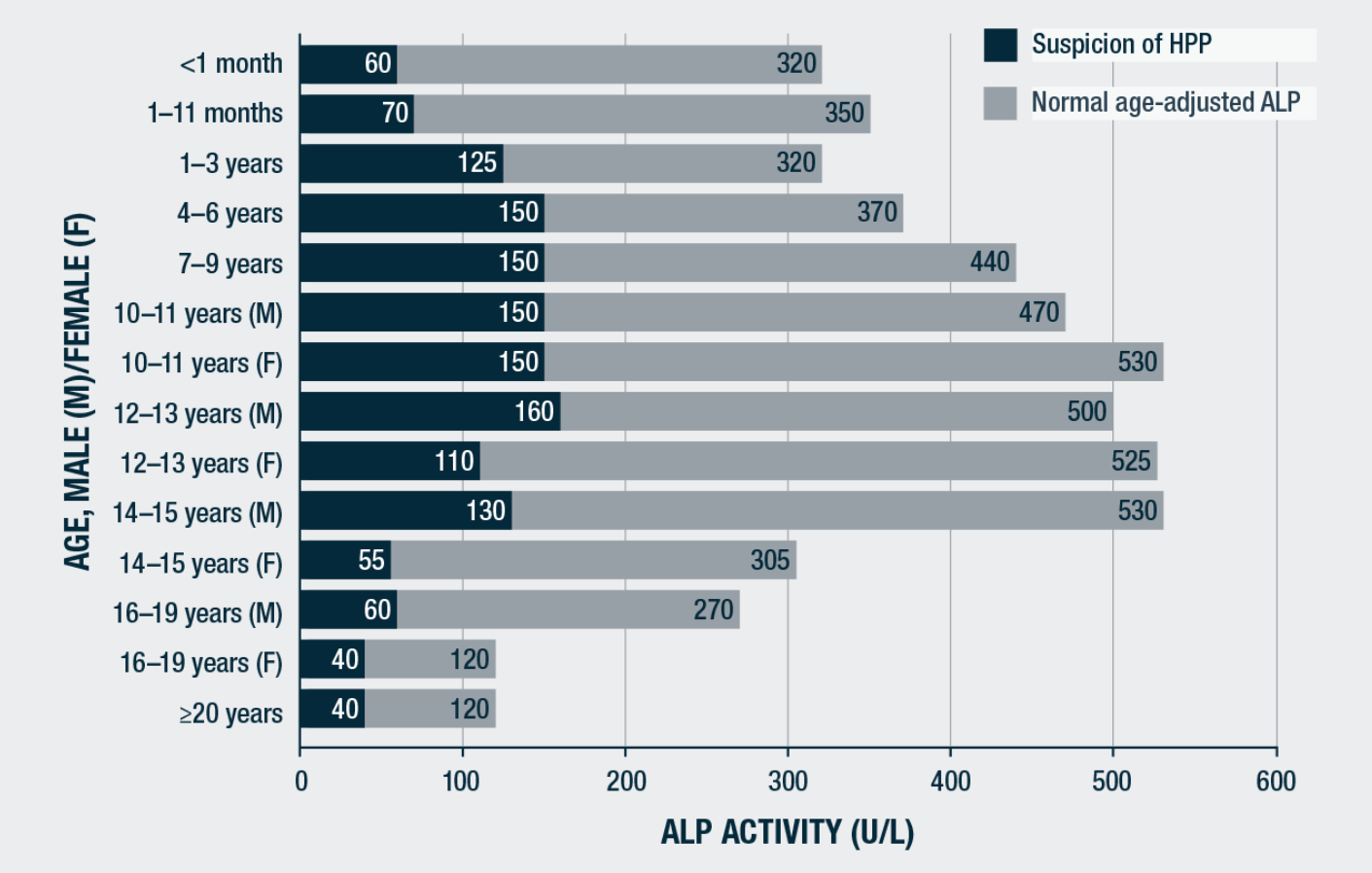Low ALP:
Could it be HPP?
If you received laboratory results that indicate low ALP, you are probably wondering what that means.

What is ALP?
ALP stands for alkaline phosphatase, an enzyme produced mostly in the liver and bones and found circulating throughout the body. You might have gotten an ALP test as part of a blood-test bundles such as the comprehensive metabolic panel or liver function panel.
A normal ALP result is typically 44 to 147 IU/L (international units per liter) or 0.73 to 2.45 µkat/L (microkatal per liter). ALP levels fluctuate throughout the life cycle. Normal levels in adolescence and pregnancy skew higher. ALP could also be elevated in the event of a bone fracture.
Low ALP is rare. It wouldn’t be unusual for a doctor to disregard a low ALP result. But if you have low ALP, you should be aware that in some people it is a sign of hypophosphatasia—HPP—a rare disease that affects bones and teeth.
How can HPP affect me?
People with HPP have soft, fragile bones that fracture easily and heal slowly. They also tend to lose baby teeth prematurely and can have skeletal deformities such as bowed legs. The severity of HPP varies widely, from no or mild symptoms to life-threatening. Other signs and symptoms that, along with low ALP, may point to a diagnosis of HPP include:
- Failure to thrive (in infants)
- Short stature
- Bone and joint pain
- Missed gross motor milestones (standing, sitting, crawling, turning over)
- Misshapen head, caused by craniosynostosis or chiari malformation
- Brain fog
HPP is sometimes mistakenly diagnosed as fibromyalgia, arthritis, osteoporosis, cleidocranial dysplasia, osteogenesis imperfecta (type II), Wilson’s disease, Cushing syndrome, hypothyroidism, cardiac bypass, multiple myeloma, or massive transfusion.
Next steps if you have low ALP
If you have a lab result that shows low ALP, it is important to rule out HPP. Your doctor may run additional tests, such as:
- Bone x-rays
- ALP (to reconfirm)
- Vitamin B6 (Indicator: a too-high level is an indicator)
- PEA (Indicator: excess urinary excretion of phosphoethanolamine)
- PLP (Indicator: increased level of blood pyridoxal 5’-phosphate)
- Genetic testing
You can learn more about navigating the process of ruling out HPP from Soft Bones resources, starting with this HPP fact sheet and this video about ALP. You can also contact Soft Bones for assistance in identifying additional resources.


